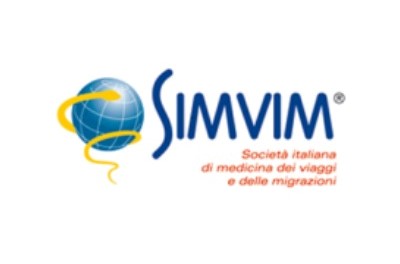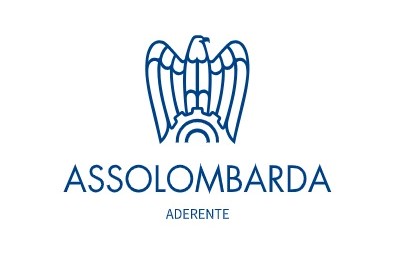Masks: which to choose and why
Category: News - Author: Staff Ambimed
According to Prime Ministerial Decree of 26 April, masks are still compulsory in closed places accessible to the public, such as public transport and shops, or in cases where it is not possible to maintain physical distance. Some regions have extended this requirement to other settings.
Article 3(2) states that “community masks may be used, i.e., disposable masks or washable masks, including self-produced masks, made of multi-layered materials that provide an adequate barrier and, at the same time, ensure comfort and breathability, and an adequate shape and fit to cover from the chin to above the nose”.
In any case, masks cannot replace social distancing, hand hygiene and scrupulousness in not touching one's face (nose, eyes and mouth).
What is the difference between surgical masks and so-called community masks?
Surgical masks are designed for medical use and therefore developed for use in healthcare environments. To be safe, they must be produced in compliance with the technical standard UNI EN 14683:2019, which provides for characteristics and test methods, indicating the requirements of:
- liquid splash resistance
- breathability
- bacterial filtration efficiency
- cleaning from microbes.
The surgical mask protects the wearer and the surrounding environment but does not protect against airborne infectious agents, so it does not prevent the wearer from being potentially contaminated by a virus such as Coronavirus. This considerable difference is mainly due to the poor fit to the face, which reduces the filtering capacity from the outside to about 20%, compared with about 95% to the outside.
In view of the chronic difficulty of finding surgical masks or the even more sought-after FFP2 and FFP3 masks, the Italian Government has introduced (Article 16(2) of Legislative Decree of 17 March 2020) the possibility of producing masks other than those authorised as medical or personal protective equipment.
No assessment by the Istituto Superiore di Sanità or INAIL is required for the marketing of these masks, but the manufacturer must nevertheless guarantee the safety of the product. The materials used must not, for example, cause irritation or any other harmful effect to health.
In the government's intentions, these masks aim to reduce the circulation of the virus in daily life. However, they cannot be used in a hospital or care setting as they cannot meet the technical requirements of PPE or medical devices such as surgical masks.
Wearers must still observe the precautions relating to social distancing introduced to counter the current pandemic emergency.
What are the various types and uses of FFP respirators?
A respirator, also called a filtering facepiece, is a piece of personal protective equipment (PPE) that prevents the wearer from inhaling inhalable dusts, fumes or mists of liquids (aerosols).
They are certified in accordance with the provisions of Legislative Decree No. 475/1992 and on the basis of harmonized European technical standards (UNI EN 149:2009) that specify the minimum requirements for filtering dust masks, in order to guarantee the characteristics of efficiency, breathability and stability of the structure through technical tests and trials.
The European classification system is divided into three FFP classes, where FFP stands for 'filtering face piece'.
The protection classes FFP1, FFP2 and FFP3 offer, depending on the total leakage and filtering of particles with a size of up to 0.6 μm, respiratory protection for different concentrations of harmful substances. Total leakage is due to filter penetration and seal defects on the face and nose.
Thanks to the innovative filter technology, breathing resistance also remains low and breathing is not hindered by particles captured in the filter, even in the event of repeated use of the filtering mask.
- FFP1 refers to the minimum filtration of masks, with an aerosol filtration of at least 80% and an internal leakage of maximum 22%. This mask is mainly used as a dust mask in working environments where toxic or fibrogenic dusts and aerosols are not expected. They are generally used in the construction and food industries.
- FFP2 masks have a minimum filtration rate of 94% and a maximum leakage rate of 8% inside. They are suitable when workers come into contact with aerosols, mists and fumes, which in the long term cause the development of respiratory diseases such as lung cancer and massively increase the risk of secondary diseases such as active pulmonary tuberculosis. They are used, for example, in the metallurgical industry or mining.
- FFP3 masks have the highest filtering properties of the FFP masks. With a minimum filtration rate of 99% and a maximum leakage of 2% inside, they protect against very fine particles such as asbestos and are able to filter out toxic, carcinogenic and radioactive particles as well as pathogenic micro-organisms. They are used in the chemical industry and are essential for technicians specialising in asbestos removal.
These facial filters may have a valve that facilitates breathing by the wearer but not by others and therefore should not be used by the general population outside the hospital environment, as people infected with Covid-19 could transmit the disease to those around them.
An interesting study conducted by Professor Andrea Crisanti, director of the Department of Molecular Medicine at the University of Padua, on the population of Vo' Euganeo, the Veneto municipality from which the first Italian patient to die from Covid-19 came, revealed an alarming finding. 43% of the swabs carried out on the population of this small municipality of 3,300 inhabitants tested positive for coronavirus but were asymptomatic.
https://www.medrxiv.org/content/10.1101/2020.04.17.20053157v1
This significant figure makes us understand why it is necessary for the general public not to adopt filtering masks with valves, which could help to spread the virus unwittingly.
The right balance between quality and cost? Washable masks
Dr Domenico Arcuri, the extraordinary commissioner appointed by the government to manage the current health emergency, issued an order valid from 27 April which set the maximum price of a surgical mask at 50 cents plus VAT, thus upsetting all the players involved in the supply chain.
This price was impossible to sustain as the intermediate distributors bought them from manufacturers for between 70 and 80 cents and then sold them to pharmacies for a few cents more. The final price for the user ranged between 1.30 and 2 euros.
Pending further developments, pharmacies found themselves unable to resell the purchased masks at a price above the maximum retail price.
Importing companies diverted sales of surgical masks to other European countries, leading to a shortage of surgical masks in Italy in recent weeks.
In the meantime, various types of washable and reusable masks have appeared on the Italian market, whose filtering effectiveness has never been proven, making them de facto “community” masks and not included among medical devices such as surgical masks.
Into this jungle came the unique washable and reusable Ambimed protective mask. In fact, it is the only washable surgical mask produced in Italy that has been successfully tested for filtration efficiency and breathability.
The report by the Department of Chemistry of the University of Florence certified that the Ambimed washable mask has an excellent filtration efficiency (at least 96%) for all size classes down to 0.3 microns.
In addition, the Department of Civil, Chemical, Environmental and Materials Engineering (DICAM) of the University of Bologna has demonstrated, following tests carried out as indicated by the standard EN 14683:2019, that the product meets the respirability requirements of the standard itself.
The Ambimed mask withstands up to 10 machine washes, is made in Italy and benefits our economy rather than that of other countries.
It is sold in a kit that includes 5 masks, with a suggested retail price of €19.90. This means that a mask costs less than 4 euros and a person can protect his or her health at a daily cost of 40 cents, which is less than the government-approved price for surgical masks.
Finally, have you ever wondered where the billions of disposable protective devices we use on a daily basis end up? The use of a washable mask drastically reduces the environmental impact generated by the use of disposable masks.





